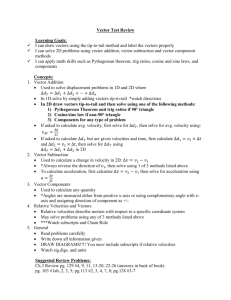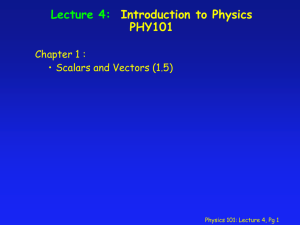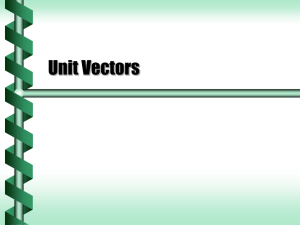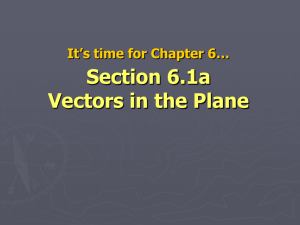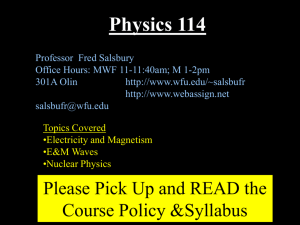Introduction to ENGR 111
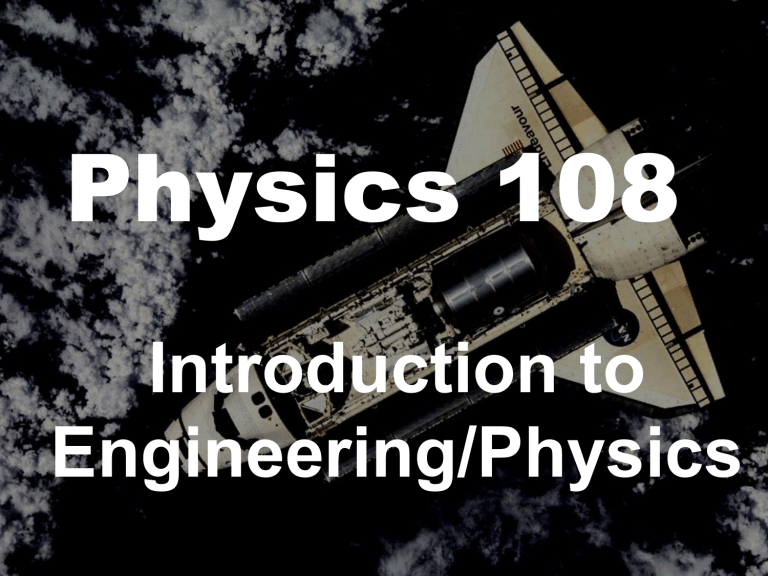
Physics 108
Introduction to
Engineering/Physics
Objectives of Physics 108
Learn about the different engineering disciplines
Learn about professionalism in engineering
Become a better problem solver
Develop teaming skills
Why Active/Collaborative Learning?
Active
Countless studies have shown improvement in:
short-term retention of material,
long-term retention of material,
ability to apply material to new situations
Collaborative
Engineering teams are used in industry and usually make the best use of time
Consulting
Why Physics?
Architecture
Astronomy
Engineering
Mechanical
Electrical
Civil
Review
Units of
Measure
See Notes
Chapter 1
Introduction to
Vectors
Scalar Quantity
a quantity that has magnitude but not direction
Vector Quantity
a quantity that has both magnitude and direction
Vector Quantities
force
e.g. 20 Newtons Eastward
velocity
e.g. 20 meters/second North
acceleration
e.g. 9.8 m/s 2 downward
Scalar Quantities
length
e.g. 93,000,000 miles
mass
e.g. 180 kg
speed
e.g. 186,000 miles/second
Vector
an arrow drawn to scale used to represent a vector quantity
vector notation
F
Resultant
the sum of vectors
Methods of Vector Addition
tip-to-tail method (polygon method)
component method
Tip-to-Tail Method
Example 1: Add these vectors using the tip-to-tail method.
+
A
B
Tip to Tail Method
A + B = C
C
B
A
Component Method y
A y
A
A x x
Notes on Components
Components are vectors
A
A y
A x
A x
A y
A
Lengths of Components
A q
A x
A x
= A cos q
A y
= A sin q
A y
If Components are Known
A
2 x
A
2 y
A
2 q
Tan
1
(A y
/A x
)
Unit Vector
magnitude of 1 and a direction iˆ , jˆ , kˆ
R
R x iˆ
R y jˆ
R z kˆ



